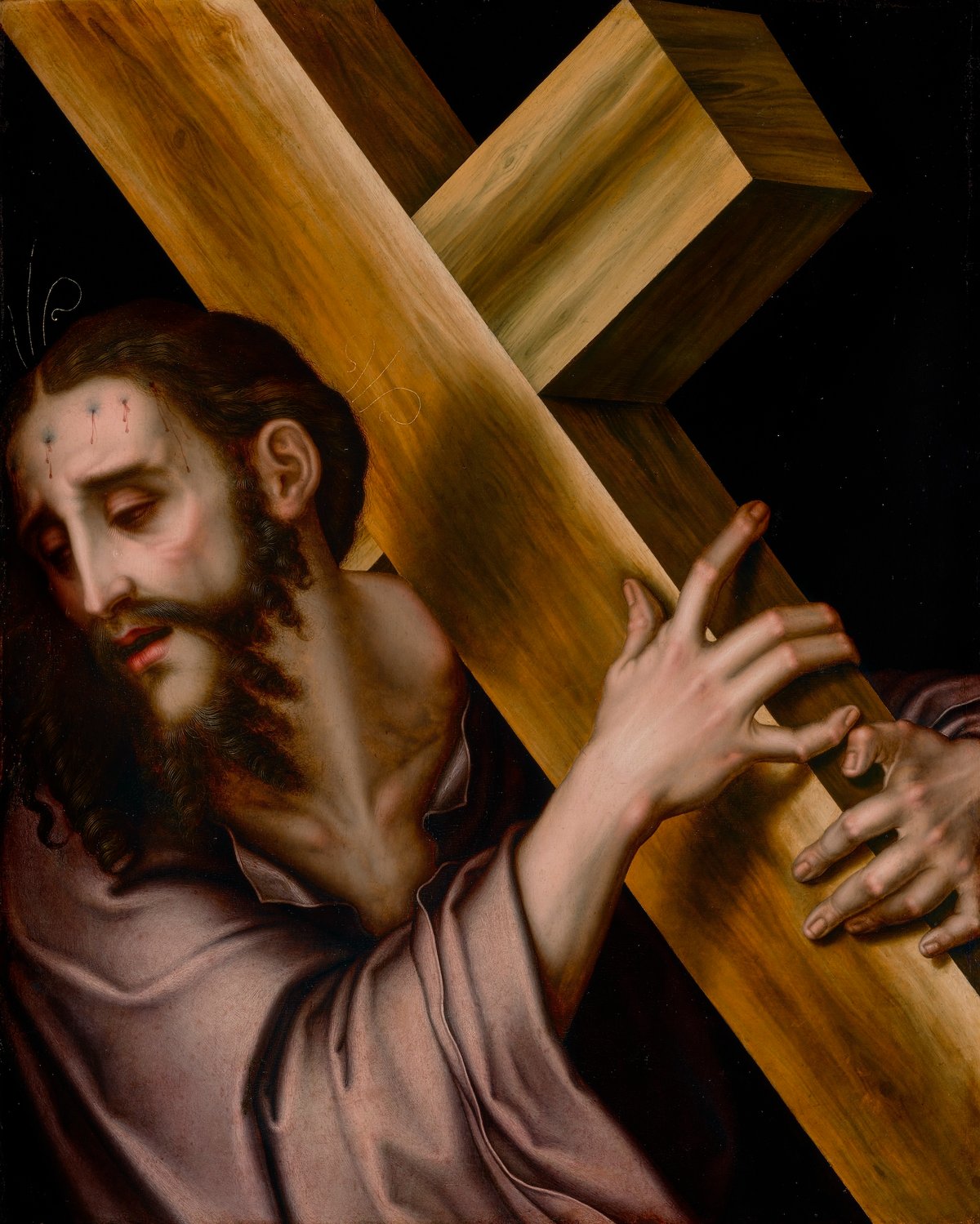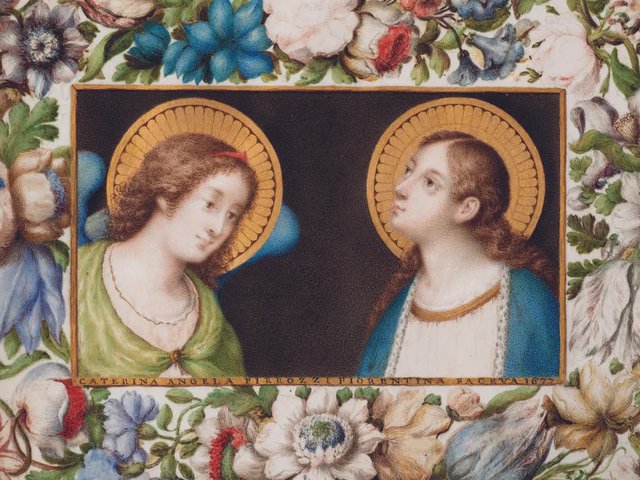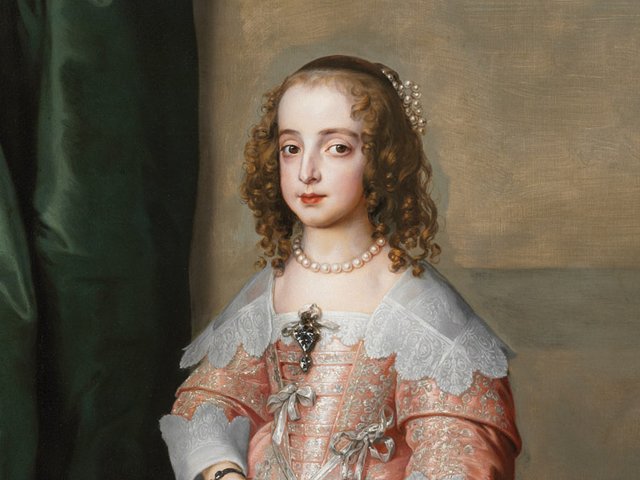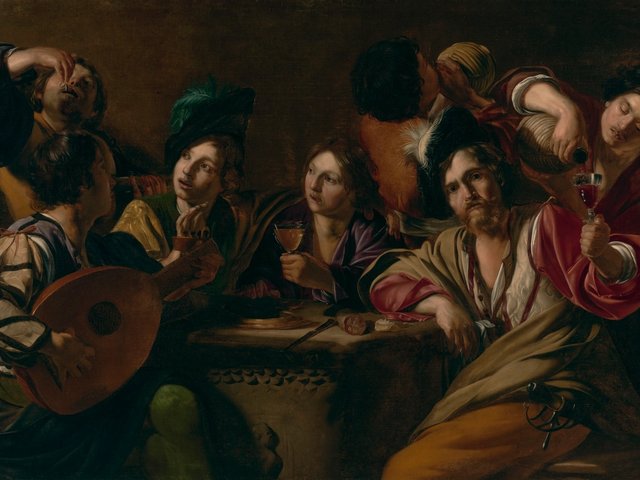The J. Paul Getty Museum has acquired a painting by Luis de Morales (1505-86)—the Spanish Renaissance artist referred to by some early sources as “El Divino”—that recently underwent extensive conservation at the Getty. The painting, Christ Carrying the Cross (around 1565), will go on view at the Los Angeles museum on 1 May. It depicts a visibly pained figure of Christ in a pale red robe against a black backdrop, tears running from his eyes and blood dripping down his brow from where the crown of thorns once sat, as his hands grip a massive wooden crucifix.
“Luis de Morales’s devotional paintings were perfect vehicles for meditation due to their morbid sensibility and exquisite artistry,” Timothy Potts, the Getty Museum’s director, said in a statement. “This expressive scene conveys the religious sensibility of the artist’s patrons and the role that painting played in its time as a powerful visual aid to prayer and personal devotion inspired by the great Spanish mystics.”
When it arrived at the Getty, the painting suffered from varnish clouding its imagery and colours, alterations to some of the composition’s details and, most challengingly, an 18th century enlargement whereby wooden strips were nailed to the painting’s edge and the image’s borders were expanded upon. Kari Rayner, an associate conservator at the museum, used solvents to remove the newer paints from Morales’s original image. However, removing the wooden additions was deemed too risky, so a new custom frame was created to hide the extensions.
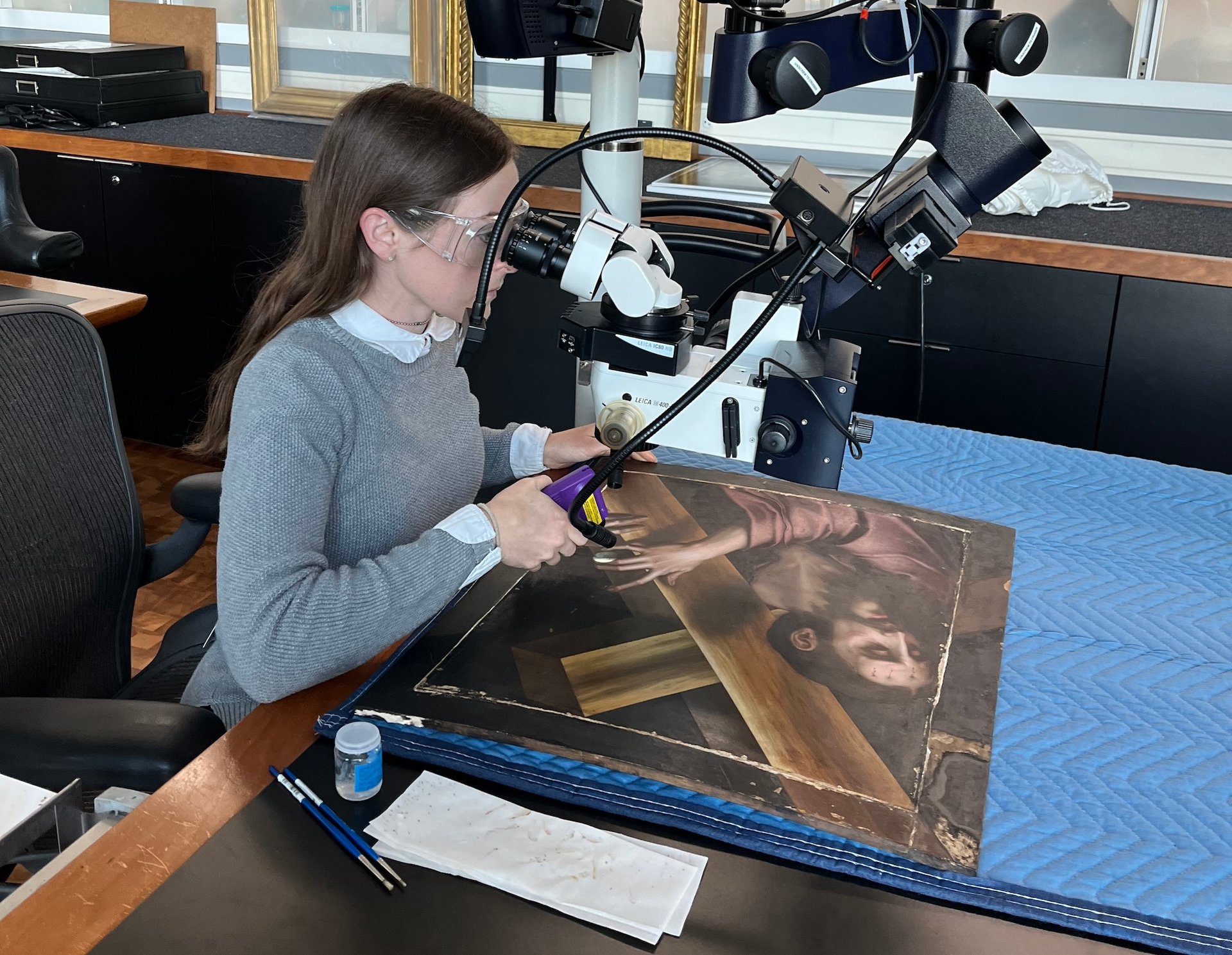
Kari Rayner, an associate conservator of paintings at the Getty Museum,
examines Christ Carrying the Cross under magnification during its
conservation treatment. In combination with the microscope, she uses a
flashlight emitting ultraviolet radiation to assess the extent of varnish
and overpaint. Photo courtesy of Getty Museum
"In addition to painting over the original, the previous expansion took some liberties with the image, extending Christ’s cross and changing the folds of his robe.” Rayner said in a statement. “Removing the non-original paint was a lengthy and challenging process, but it has brought the painting closer to how the artist originally intended the artwork to appear.”
The painting, before its restoration and at the time attributed to Morales’s studio, was offered for sale at the German auction house Nagel Auktionen in July 2021 with an estimate of €10,000 ($11,826). Evidently, bidders had the sense that its attribution might be upgraded, and the work ultimately sold for €1.18m ($1.39m)—not so far off from the auction record for Morales’s work, set by his The Virgin and Child, or La Virgén del Sombrero, which sold for £1.6m (more than four times its high estimate) at a Sotheby’s Old Masters auction in 2010. A spokesperson for the Getty confirms that the institution acquired Christ Carrying the Cross via a subsequent private sale, for an undisclosed price, from the London-based Daniel Katz Gallery.
“Fully autographed works by Luis de Morales rarely appear on the market,” Davide Gasparotto, the Getty Museum’s senior curator of paintings, noted in a statement. “This sublimely expressive painting represents a great opportunity to enrich our collection with a compelling work by one of the defining protagonists of 16th-century Spanish art.”
The Morales work joins the Getty’s collection of Spanish paintings by his contemporary El Greco, as well as pieces by Bartolomé Esteban Murillo, Francisco Goya, Juan de Valdés Leal and others.


